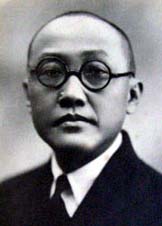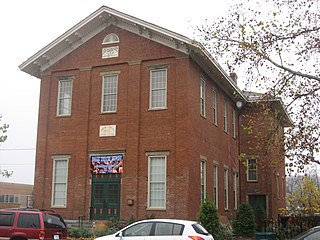
The Teatro Colón is a historic opera house in Buenos Aires, Argentina. It is considered one of the ten best opera houses in the world by National Geographic. According to a survey carried out by the acoustics expert Leo Beranek among leading international opera and orchestra directors, the Teatro Colón has the room with the best acoustics for opera and the second best for concerts in the world.

The Royal Pavilion and surrounding gardens is a Grade I listed former royal residence located in Brighton, England. Beginning in 1787, it was built in three stages as a seaside retreat for George, Prince of Wales, who became the Prince Regent in 1811, and King George IV in 1820. It is built in the Indo-Saracenic style prevalent in India for most of the 19th century. The current appearance, with its domes and minarets, is the work of the architect John Nash, who extended the building starting in 1815. George IV's successors William IV and Victoria also used the Pavilion, but Queen Victoria decided that Osborne House should be the royal seaside retreat, and the Pavilion was sold to the city of Brighton in 1850.

The Real Teatro di San Carlo, as originally named by the Bourbon monarchy but today known simply as the Teatro (di) San Carlo, is a historic opera house in Naples, Italy, connected to the Royal Palace and adjacent to the Piazza del Plebiscito. It is the oldest continuously active venue for opera in the world, having opened in 1737, decades before either Milan's La Scala or Venice's La Fenice.

The German Templer Society, also known as Templers, is a Radical Pietist group that emerged in Germany during the mid-nineteenth century, the two founders, Christoph Hoffmann and Georg David Hardegg, arriving in Haifa, Palestine, in October 1868 with their families and a few fellow Templers in order to establish a colony. Templer theology is rooted in the legacy of preceding centuries during which various Christian groups undertook to establish the perfect Christian religion in preparation for Christ's promised return. The movement was founded by Christoph Hoffmann, [1815-1885] who believed that humanity's salvation lay in the gathering of God's people in a Christian community. He also believed that the second coming of Christ was imminent, and that according to Biblical prophecy it would take place in Jerusalem, where God's people were to gather as a symbol of the rebuilding of the temple.

Greenwich Theatre is a local theatre located in Croom's Hill close to the centre of Greenwich in south-east London.

The Victoria Theatre and Concert Hall is a performing arts centre in the Central Area of Singapore, situated along Empress Place. It is a complex of two buildings and a clock tower joined together by a common corridor; the oldest part of the building was first built in 1862, and the complex was completed in 1909. The complex has undergone a number of renovations and refurbishment, mostly recently in 2010 when the complex was closed for a four-year renovation project. It reopened on 15 July 2014.

Freemasons' Hall in London is the headquarters of the United Grand Lodge of England and the Supreme Grand Chapter of Royal Arch Masons of England, as well as being a meeting place for many Masonic Lodges in the London area. It is located in Great Queen Street between Holborn and Covent Garden and has been a Masonic meeting place since 1775.

The Teatro Real is an opera house in Madrid, Spain. Located at the Plaza de Oriente, opposite the Royal Palace, and known colloquially as El Real, it is considered the top institution of the performing and musical arts in the country and one of the most prestigious opera houses in Europe.

Ramsgate is a seaside town in the district of Thanet in east Kent, England, with a population of 39,639 in the '2001 UK Census. It was one of the great English seaside towns of the 19th century. Ramsgate's main attraction is its coastline, and its main industries are tourism and fishing. The town has one of the largest marinas on the English south coast, and the Port of Ramsgate provided cross-channel ferries for many years.

Kirkmichael is a village located in Strathardle, Perth and Kinross, Scotland. It is 13 miles north-northwest of Blairgowrie and 12 miles east-northeast of Pitlochry on the A924 Bridge of Cally to Pitlochry road, and is linked to the A93 Perth to Aberdeen road by the B950. The village is centred around Kirkmichael Bridge over the River Ardle.

Lee Choon Seng was a businessman and philanthropist in pre-independence Singapore. He founded several companies, cultivated rubber plantations in Malaya and started Chinese banks in the region. Lee held leadership roles in several Chinese community organisations in Singapore, notably the Singapore Chinese Chamber of Commerce and Industry (SCCCI), and supported Sun Yat-Sen's revolutionary cause in China. In addition, he promoted the growth of Buddhism in Singapore by setting up several Buddhist institutions, including the Singapore Buddhist Lodge, Singapore Buddhist Federation and Poh Ern Shih Temple. In 2008, his life and contributions to society were commemorated in a memorial hall at the Ee Hoe Hean Club.

The Spencer Township Hall is a historic former government building in the Columbia-Tusculum neighborhood of Cincinnati, Ohio, United States. One of Cincinnati's oldest extant public buildings, it has been designated a historic site because of its architecture.

The Redstone Building, also known as the Redstone Labor Temple, was constructed and operated by the San Francisco Labor Council Hall Associates. Initial planning started in 1910, with most construction work done during 1914. Its primary tenant was the San Francisco Labor Council, including 22 labor union offices as well as meeting halls. The building was a hub of union organizing and work activities and a "primary center for the city's historic labor community for over half a century."

The Teatro de la Zarzuela is a theatre in Madrid, Spain. The theatre is today mainly devoted to zarzuela, as well as operetta and recitals.

Riverview Hospital was a Canadian mental health facility located in Coquitlam, British Columbia. It operated under the governance of BC Mental Health & Addiction Services until it closed, in July 2012. In December 2015, the provincial government announced plans to replace the obsolete buildings with new mental health facilities, scheduled to open in about 2019. On October 12, 2021, the new Red Fish Healing Centre for Mental Health and Addiction opened on the site.

The American–German Colony is a residential neighborhood in the southern part of Tel Aviv, Israel. It is located between Eilat Street and HaRabbi MiBacherach Street and adjoins Neve Tzedek. It was originally established as an American colony, but when that failed, it was resettled and became a German Templer colony, which in time evolved into a mixed German Protestant colony.

The British Cemetery of Montevideo is one of the oldest operating cemeteries in Uruguay.

The Victoria Masonic Temple in Colombo, Sri Lanka is the meeting place for the Masonic Lodges in the Colombo area. It was built in 1901 during British rule.
The Lauriston Road Cemetery is an historic Grade II listed Jewish cemetery on Lauriston Road in South Hackney. The cemetery opened in 1788, having been purchased by the Germans' Hambro Synagogue in 1786. It was closed to further burials from 1886.

Teatro Coccia is the main opera house in Novara, and is also the most important "historical" theatres in Piedmont. It faces along via Fratelli Rosselli, and delimits piazza dei Martiri to the west and piazza Giacomo Puccini to the east.






















